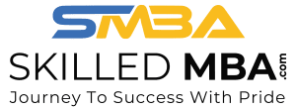Unlocking Entrepreneurial Success
Unlocking Entrepreneurial Success
Embarking on an entrepreneurial journey during or after your MBA can be both exciting and challenging. It requires a blend of innovation, strategic planning, and resourcefulness. Fortunately, there are an abundance of tools and resources specifically designed to aid MBA students in navigating the entrepreneurial landscape. In this blog, we will delve into the essential tools and resources that can pave the way for a successful entrepreneurial venture.
1. Business Model Canvas (BMC)
Website: strategyzer.com The Business Model Canvas is a strategic management template that allows you to develop new or document existing business models. It’s a visual chart with elements describing a firm’s or product’s value proposition, infrastructure, customers, and finances. It assists MBA students in aligning their activities by illustrating potential trade-offs.
2. Lean Canvas
Website: leancanvas.com Lean Canvas is adapted from Business Model Canvas and is tailored for entrepreneurs. It allows you to capture your business model in a quick one-page document, helping you to validate your ideas and assess the market’s potential.
3. Asana for Project Management
Website: asana.com Asana is a project management tool that helps teams organize and prioritize their projects and tasks in a fun, flexible, and rewarding way. It’s particularly beneficial for MBA students working on entrepreneurial projects in teams.
4. HubSpot for Marketing
Website: hubspot.com HubSpot offers a full platform of marketing, sales, customer service, and CRM software — plus the methodology, resources, and support — to help businesses grow better. For MBA entrepreneurs looking to scale their startups, HubSpot is an invaluable resource.
5. Google Analytics for Website Insights
Website: analytics.google.com Understanding your online audience is crucial. Google Analytics provides detailed statistics and analytics of web traffic and is an essential tool for marketing. It helps you to understand your customers and enhance their experience.
6. LinkedIn for Networking
Website: linkedin.com Networking is a critical part of entrepreneurship. LinkedIn, the world’s largest professional network, can help MBA students connect with alumni, industry professionals, and fellow entrepreneurs.
7. Crunchbase for Investor and Market Insights
Website: crunchbase.com Crunchbase provides information about businesses and startups, including funding rounds and key personnel. It is a powerful tool for MBA students to research potential investors, partners, or competitors.
8. Coursera for Skill Development
Website: coursera.org Coursera offers online courses from top universities around the world. Whether you need to develop skills in marketing, data science, or entrepreneurship itself, Coursera provides invaluable learning opportunities.
9. QuickBooks for Financial Management
Website: quickbooks.intuit.com Proper financial management is crucial for any startup. QuickBooks is an accounting software package that offers on-premises accounting applications as well as cloud-based versions for business payments, bill management, and payroll functions.
10. Slack for Team Communication
Website: slack.com Effective communication is the backbone of any successful team. Slack is a messaging app for teams that makes it easy to communicate and collaborate with your team in real-time.
Conclusion
Embarking on an entrepreneurial venture during your MBA is a formidable challenge, but with the right tools and resources, it can also be incredibly rewarding. The tools listed above provide a solid foundation for MBA students to plan, implement, and grow their startup ventures. Remember, the journey of entrepreneurship is a learning experience, and these resources are here to guide you every step of the way.
Important Resources & Platforms:
- Strategyzer’s Business Model Canvas
- Lean Canvas
- Asana Project Management
- HubSpot Marketing Tools
- Google Analytics
- Crunchbase
- Coursera Online Courses
- QuickBooks Accounting Software
- Slack for Team Communication
Ensuring that your blog is optimized for SEO is crucial. Make sure to include relevant keywords throughout your content, utilize internal and external links, and optimize your images with alt text. Additionally, ensure that your content is easily readable, providing value to your readers, and that your website offers a good user experience.








